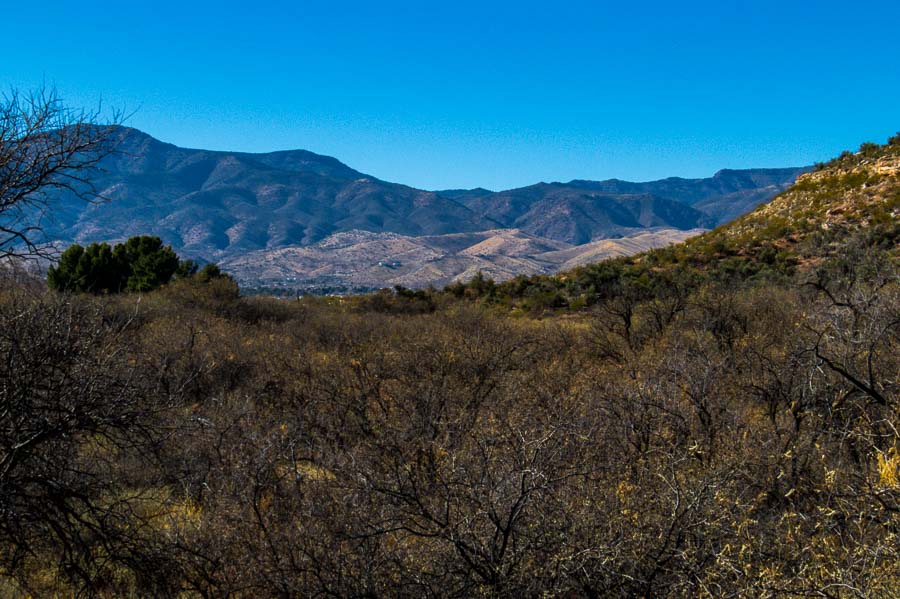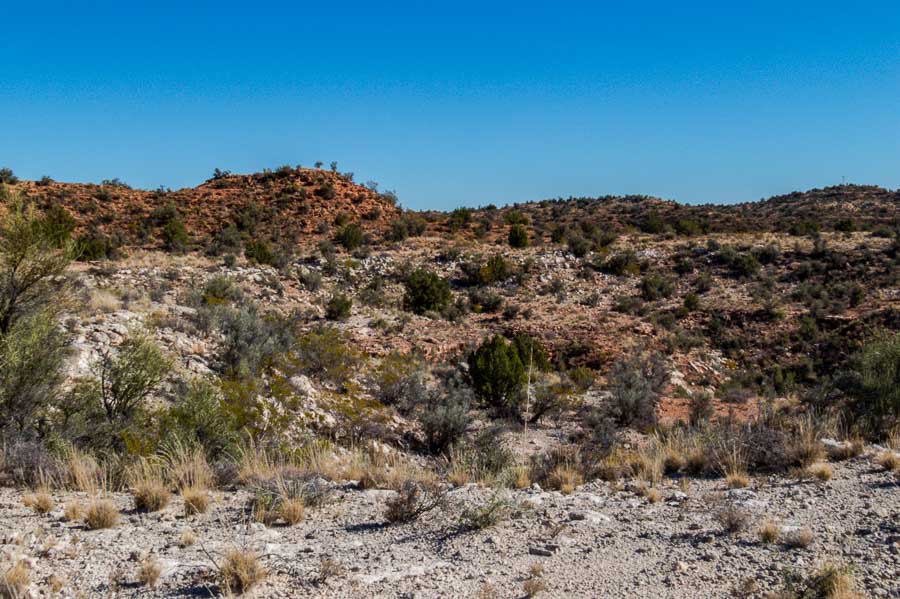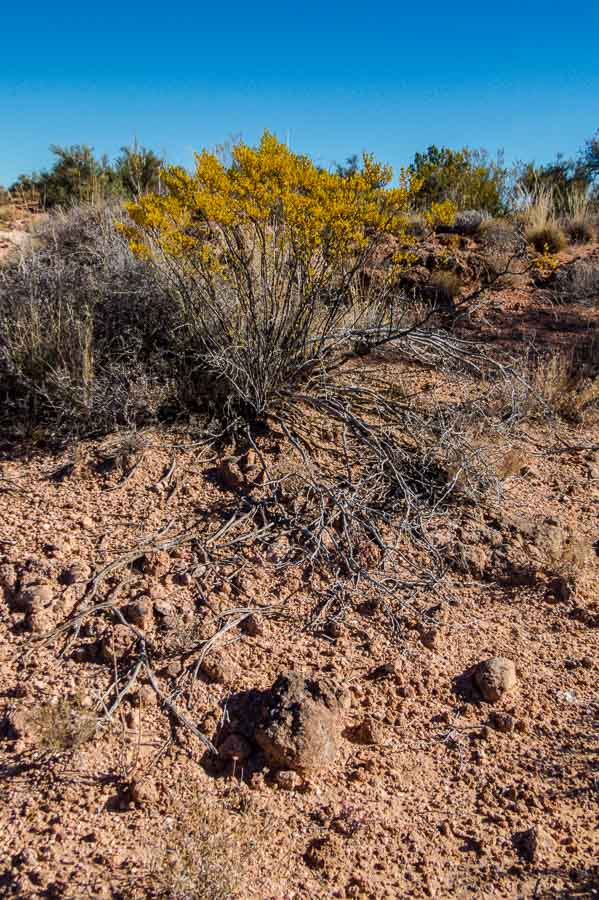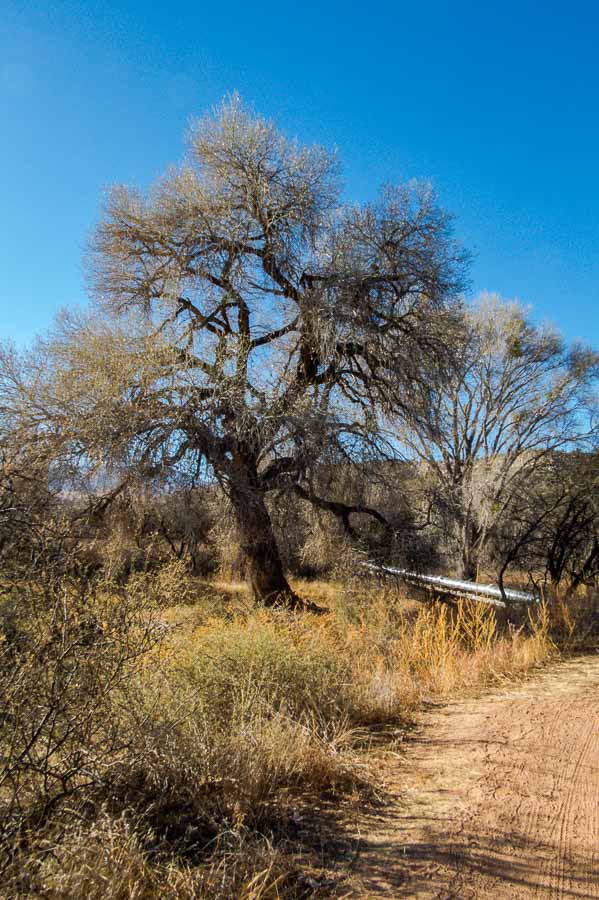We had heard about the Glendale Recharge Ponds and the variety of birds they attract. As hikers and explorers, we decided we would head out that way to see what birds we could find. We started our jaunt early to have the best chance at seeing the most birds and while we thought it might be a bit tricky to find, the directions were actually quite good (see Part 2 for directions).
Right away we saw the discharge for which the ponds were named.
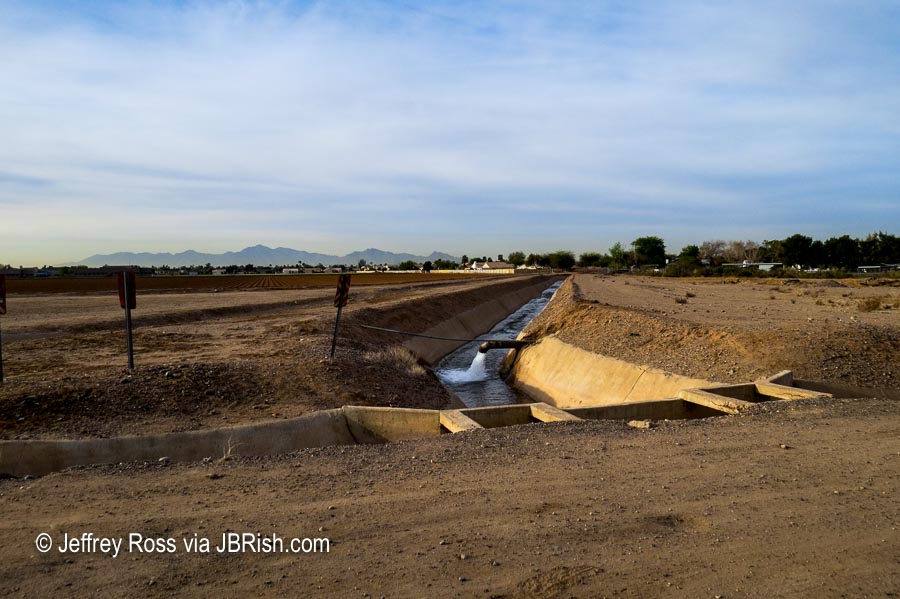
The facility is located west of and in a direct line with the University of Phoenix Stadium, home of the Arizona Cardinals football team.
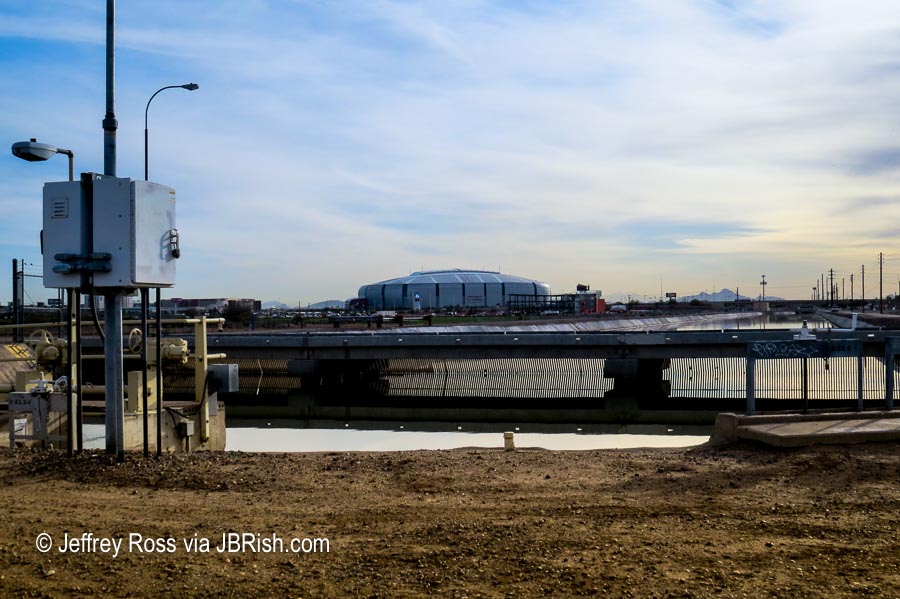
Along the access road leading to the ponds and along the sides of the waterways, there was a variety of farms and stables.

Very quickly we noticed something very, very annoying – – flies. Loads and loads of flies. Perhaps gnats would be more accurate! This might be very good for the birds, but not so pleasant for us.
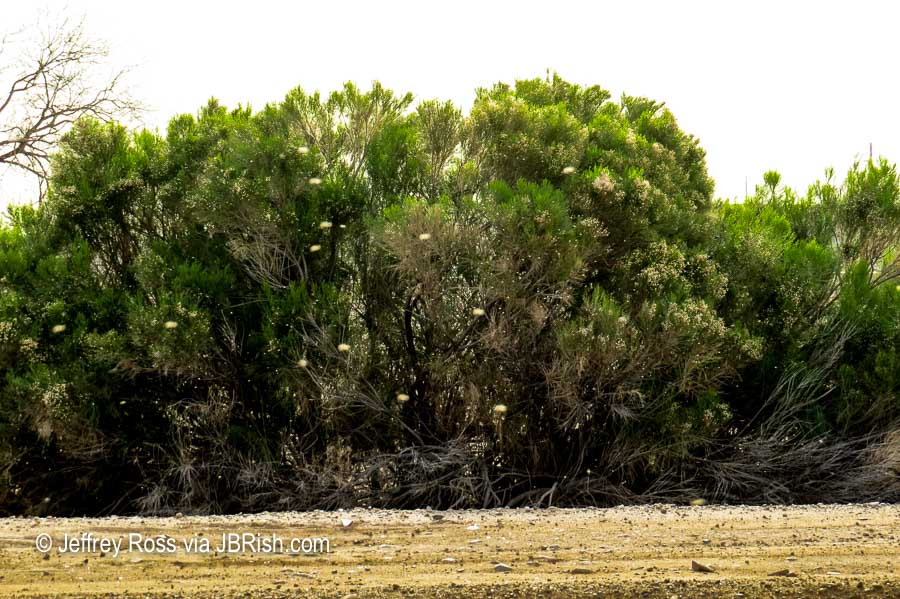
Can you see all those light brown specs in the picture above? Those are some of the flies that were flitting around as soon as we left the confines of our car. Let me circle (in red) a couple for you.

Only five were circled, but there were hundreds upon hundreds!
We traveled for about an hour to get to our destination so we were not be deterred. A move perhaps we would later regret.
Only a few short steps along the pathways we saw what I identified as a Cattle Egret. If you look closely on the neck you can see flies on the bird. Other gnats are also clearly visible on the bird.

We hadn’t planned on most of the wildlife to be so far away. As we walked, the waterbirds swam to the far side of the large pond to seek safety and therefore escape our gaze. While I had three cameras with me, the only camera that was useful was the Canon SX50 HS with a large zoom lens.

Those specks in the distance are numerous waterbirds
A more intrepid pair of birds, Black-necked Stilts, weren’t as quick to run away. They were busy searching the shallow depths for food. These are very interesting birds not only because of their somewhat whimsical black and white coloration…
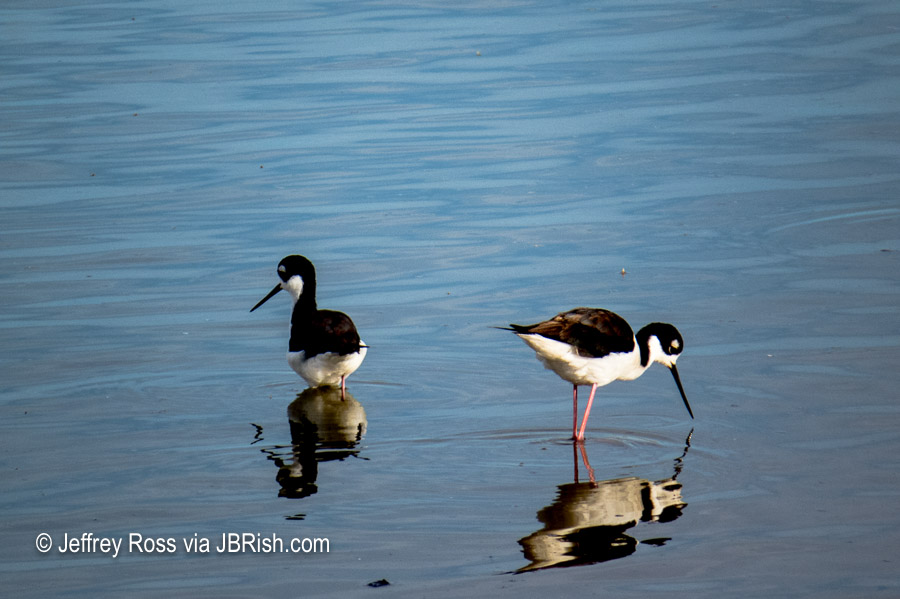
but because of their long legs! Now we know how they got their name!
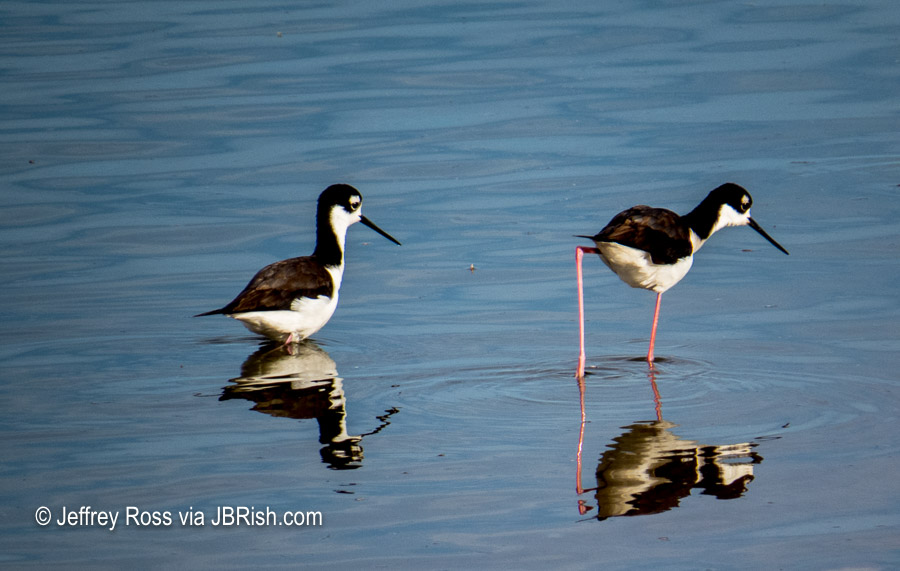
Lurking farther down the path and around the bend was an alert and somewhat wary Great Blue Heron.

In several locations there were warnings about no fishing! I have since learned that people do fish there even with the signs posted.

There were many, many Coots in the ponds, but also in the group were several other water birds. The male Northern Shoveler Duck was quite handsome.

A Killdeer looked on with interest probably wondering what we were doing out-and-about with all these bugs in the air.

To read the other JBRish posts about our Killdeer visitors:
Birds of Arizona – Killdeer ( Charadrius vociferus )
Killdeer Eggs in Our Yard; Oh My!Killdeer’s Empty Nest in our Front Yard
For more information about the Killdeer’s rearing process, you can read The Precocious Killdeer.
Unfortunately, wherever people go, there are bound to be traces that they were there. Whether intentional or not, we found a floating flip-flop and this football.

Overall, however, there wasn’t too much debris. We continued to walk a while longer to complete the circuit around the one large pond nearest our car. We were becoming a bit uncomfortable trying to “chase down” the birds with all the bugs buzzing around.
See previous JBRish posts about birds HERE
**********
All original content on this blog is copyrighted by Jeffrey B. Ross with ALL Rights Reserved. While reference links back to JBRish.com are appreciated and encouraged, please acquire approval for any reproduction of original content from this website.
©Jeffrey B. Ross – 2018

